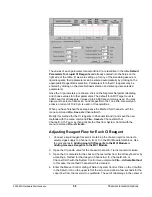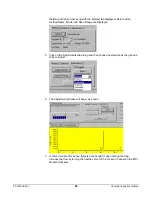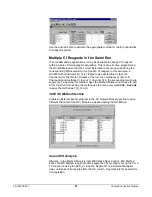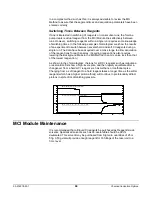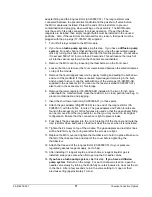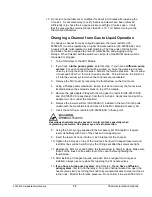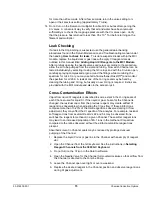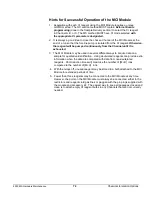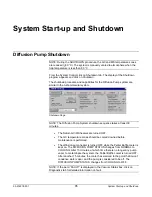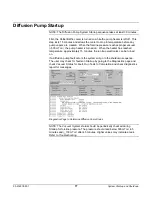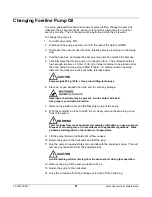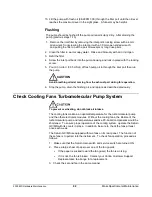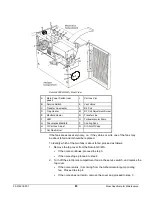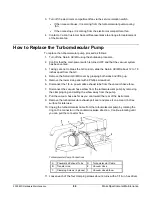
03-914978-00:1
69
Chemical Ionization Options
In a complex method such as this, it is always advisable to review the MS
Method to assure that the segment times and acquisition parameters have been
entered correctly.
Switching Times Between Reagents
If one is interested in switching CI reagents on consecutive runs, the foreline
pump clears residual reagent from the MCI Module lines effectively between
runs. However, switching reagents within a single run requires some knowledge
of switching times. In the following example chromatogram we show the results
of an experiment to switch between several hard and soft CI reagents during a
single run. The data have been acquired over a mass range to allow acquisition
of the reagent ions for each species. (Acquiring reagent ions also requires
lowering the Background Mass in the MS Method to an m/z value less than that
of the lowest reagent ion.)
As shown in the chromatogram, the ions for soft CI reagents such as isobutane
or acetonitrile first show a high-level spike, and then rapidly equilibrate after a
changeover from a harder CI reagent such as methane or methanol spike.
Changing from a soft reagent to a hard reagent takes a longer time as the softer
reagent (which has a higher proton affinity) will continue to preferentially attract
protons in spite of its diminishing pressure.
5
1 0
1 5
2 0
2 5
m i n u t e s
0 . 0
0 . 5
1 . 0
1 . 5
2 . 0
k C o u n t s
0 . 0
0 . 5
1 . 0
1 . 5
2 . 0
k C o u n t s
0
1 0 0
2 0 0
3 0 0
4 0 0
5 0 0
C o u n t s
M e t h a n o l - m / z 3 3
A c e t o n i t r i l e - m / z 4 2
M e t h a n e - m / z 1 7 + 2 9
MCI Module Maintenance
It is recommended that all liquid CI reagents be purchased as Reagent Grade
solvents. Specialized solvents such as d3-acetonitrile should be 99+%
deuterated. This solvent may be purchased from Sigma in quantities of 25 or
50g. A 50g vial will provide enough reagent for 16 fillings of the reservoir to a
3 mL level.




